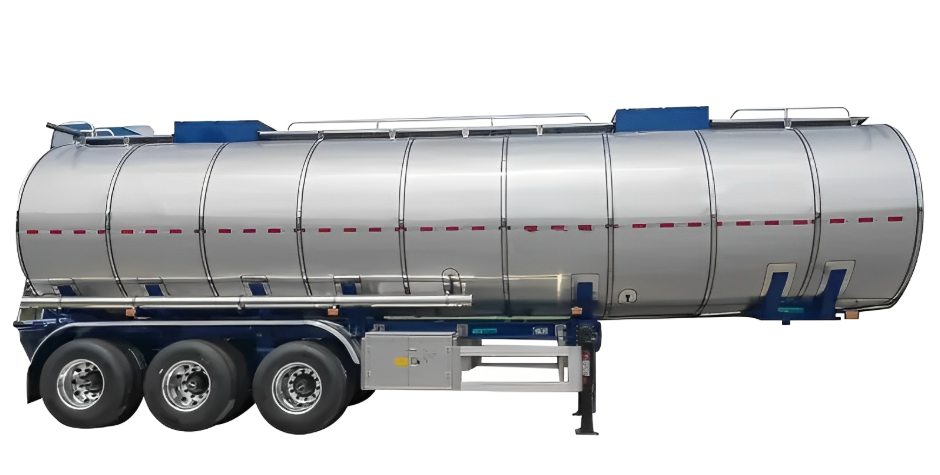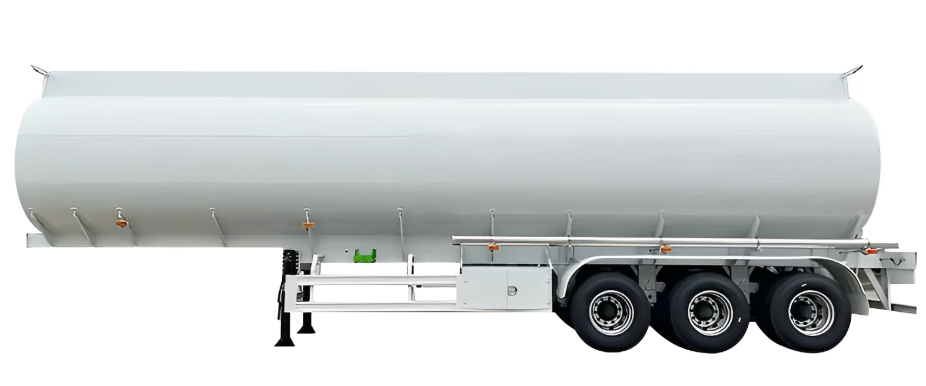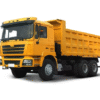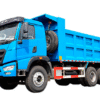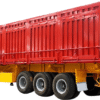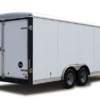As someone who’s hauled water for years, I can tell you one thing—a water tank trailer without a pump is like a truck without wheels. Sure, the tank holds water, but how do you get it where you need it? Whether you’re tackling farm irrigation, construction jobs, or emergency water delivery, a reliable pump isn’t just helpful—it’s absolutely essential.”
“Ever tried moving thousands of gallons of water by gravity alone? I have, and let me save you the frustration—it’s slow, inefficient, and often downright impractical. A pump transforms your water tank trailer from a static storage unit into a powerful, on-demand water delivery system. Need to fill a distant trough, pressurize a sprayer, or quickly offload at a job site? Without a pump, you’re stuck.”
“Here’s the truth: if your water tank trailer doesn’t have a pump, you’re losing time, money, and opportunities. I learned this the hard way when a simple landscaping job took twice as long because I had to rely on gravity-fed flow. Investing in the right pump means control—over pressure, speed, and where your water goes. Let’s break down why skipping a pump is a mistake you don’t want to make.”
Get Powerful Water Pressure for Faster Spraying
From my experience, a water tank trailer with a pump is a must. It gives you pressurized water, which makes spraying on a job site much faster. Gravity-fed systems are slow and give you an uneven flow. I find that a pump provides a strong, consistent stream. Most pumps I see can push up to 22 gallons per minute (GPM) at pressures up to 50 PSI. This means you can cover big areas without wasting time and effort.
Why I Recommend a Pressurized System
Even Spraying: With a pressurized system, the water spreads evenly. You need this for jobs like watering lawns or controlling dust on a construction site. I think gravity systems can’t match the speed or quality of a strong spray.Better Productivity: I suggest looking for trailers with multiple outlets; some have up to four. This lets more than one person work at the same time. You can attach different hoses and sprayers. This setup reduces waiting and keeps your project on schedule.Flexible Uses: I find pressurized water makes many common jobs easier. Here are a few examples:Dust control, because the strong spray helps settle airborne dust.Even watering for lawns, gardens, or crop fields.Cleaning equipment or surfaces where a gravity flow lacks power.Refilling portable restrooms or other tanks, which is a great help in remote areas.Works in Cold Weather: I’ve seen many pump systems that are insulated. They often have freeze protection controlled by a thermostat. This keeps your water flowing even in cold weather. I know from experience that basic gravity-fed tanks can’t promise that.Easy to Customize: I like that you can add hose kits and different spray attachments. This lets you adapt the trailer for any job. You can get more reach or spray with better accuracy.
Finding the Right Size for Your Job
Smaller water tanks, like those holding 500 to 1025 gallons, also come with pumps. I often see them with centrifugal or electric ones. In my opinion, these are great rental options for smaller jobs. They are easy to move around but still give you the power of a pressurized system.
Based on my experience, trying to spray, clean, or serve multiple people without a pump is inefficient. Some jobs are almost impossible to do well that way. A water tank trailer with the right pump changes everything. It takes water delivery from a slow trickle to a fast, dependable, and controllable stream. I believe this is critical for today’s jobs in construction, landscaping, farming, and emergency response.
Achieves Consistent and Adjustable Flow Rates
From my experience, a pump with adjustable flow rates gives you powerful control over your water delivery. Pumps with built-in flow regulators let you fine-tune the output. You can choose a light mist or a heavy stream. I’ve seen some models push up to 1,110 gallons per hour (GPH). This flexibility allows you to match the water delivery to any task, from light dust control to heavy irrigation.
Benefits of Adjustable Flow Control
Precise Water Output: I find that trailer-mounted controls help me set the right pressure and flow for the job. You can clean equipment, water crops, or suppress dust. This control stops you from wasting water or over-spraying.Versatility Across Jobs: With a variable regulator, you can switch from a low-flow trickle to a high-flow blast. This is great for moving between delicate tasks and deep cleaning without changing hardware.Efficiency Gains: I’ve noticed that matching the flow to the job’s needs saves water and power. In engine-driven systems, this can even save you fuel.
Real-World Examples & Upgrades
Standard vs. Upgraded Pumps: A standard Original Equipment Manufacturer (OEM) pump often provides around 3 gallons per minute (GPM) at 55 PSI. I suggest upgrading to a variable-speed pump. A model rated at 5 GPM, 60 PSI will give you a much steadier flow and superior control.Industrial Capacity: For bigger projects, a heavy-duty system is what you need. A Pioneer pump with a Kubota engine can deliver up to 2,600 GPM. It also has a vertical lift of 140 feet. I believe this setup is ideal for large-scale jobs that demand high, steady pressure.
Why Consistency Matters
In my experience, these technical upgrades lead to more reliable performance in the field. A consistent, adjustable water flow is vital. It helps you keep dust down on a busy site, irrigate your fields uniformly, or wash down equipment. You can avoid sputtering sprays and unexpected water shortages. I think with the right pump, every gallon is easy to manage, and every task gets done as planned.
Gets Water Uphill and Across Long Distances
From my experience, a water pump is a must-have if your water tank trailer needs to push water to higher ground or across big job sites. Relying on gravity alone just won’t cut it. It fails on uneven ground, and you can’t use it to spray water up slopes, banks, or higher floors on buildings. A pump gives you the power to get water exactly where you need it, even over rough ground or to spots far away.
My Top Reasons for Using a Pump
Pushes Water Up and Out: Pumps move water up and across much farther than gravity-fed systems. On huge projects like the Qingdao Bay Bridge, I’ve read that professional pumps moved materials over 1,000 meters up and more than 4,000 meters across.Flexible for Any Job: I suggest looking into advanced trailers with dual-pump systems. These setups allow you to switch between high pressure and high volume. This is great for spraying tall buildings, watering distant fields, or fighting fires on slopes.Strong and Dependable Power: I often recommend a standard 4 HP pump with a Honda engine. It’s powerful enough for washing jobs at a height. It also works well for watering plants on steep banks.You Control the Flow and Pressure: Trailer pump systems can give you up to 3,000 PSI with flow rates around 4 gallons per minute. I like that you can adjust these settings to hit the exact height or distance you need.Easy to Adjust: Some hydraulic systems let you switch between high-pressure and high-volume modes almost instantly. This means you always get water where you need it, whether you are covering a distant slope or sending water to equipment up high.
Useful for Many Jobs:
- Watering crops on rolling farmland
- Putting out fires on hills or in tall buildings
- Deicing planes or servicing tall equipment
- Getting water to tools or machines on high platforms
Why Height and Distance Are So Important
Based on my experience, a pump on your water tank trailer is not just a nice feature—it’s essential. You need one on any site where water has to go up or out over difficult ground. With a pressurized flow, you stop wasting time moving the trailer around. You also avoid dragging heavy hoses over rough dirt. You make sure every gallon hits its mark, which saves time and makes hard jobs achievable.
Go Beyond Gravity: Why I Recommend a Pump
From my experience, a water tank trailer with a pump can do so much more than a simple gravity-fed one. You get pressurized water. This means you aren’t stuck relying on hills or natural flow. This freedom lets you take on jobs that need a powerful, controlled spray.
Common Jobs for a Pump-Powered Trailer
Irrigation in Remote or Flat Areas: I’ve seen pumps work wonders for irrigating large fields or gardens on flat land where gravity just can’t help. The ABI 340-gallon water trailer, for instance, has a 160 cc Honda pump. I find its controlled, adjustable spray makes watering even big plots a fast job.Water for Livestock: A pump gives you reliable, pressurized water for livestock troughs. I’ve found this crucial for rotational grazing. Even if your tank is downhill from the feeding area, the pump ensures your animals always get water.
Firefighting and Fire Prevention: For firefighting, you need speed and power. I suggest using a trailer with a 550–2,000+ gallon tank and a strong pump. These are great for putting out fires or creating fire breaks. A system relying only on gravity isn’t fast or powerful enough.Dust Control on Job Sites: To control dust on job sites, you need a consistent spray. A pump provides the pressure for even coverage on roads and parking areas. In my opinion, gravity systems just don’t have the reach for this work.
Cleaning Equipment and Vehicles: Need to clean equipment? A pump lets you connect hoses and nozzles for a strong spray. I find it’s the only practical way to wash down machinery, vehicles, or buildings with a trailer.Transporting and Supplying Potable Water: I recommend using a pump to move water. It makes filling or emptying storage tanks, pools, and cisterns simple, no matter their height. This saves a lot of time and effort.
Flexible Setups for Many Industries
Tank Capacities: You can find water trailers from 340 to 2,010 gallons. I believe the pump makes these models useful for any job, whether you’re off-road or on a worksite.Spray System Options: The onboard pump powers all your spray options. You can use rear nozzles for wide coverage or a handheld hose for specific, targeted tasks.Wide Range of Uses: I’ve seen these pump-equipped trailers used everywhere. They are perfect for farming, landscaping, firefighting, city jobs, dust control, and recreation.https://www.youtube.com/watch?v=yFbTmUG5FTg
Why I Think You Should Choose a Pump-Equipped Water Tank Trailer
Works Anywhere: You aren’t limited by gravity. You can get water to any spot, regardless of the terrain or height.Adjustable Output: I like how you can change the flow and pressure. This helps you match the spray to the job, from gentle watering to powerful cleaning.Fast Tank Management: You can fill and empty tanks and containers with speed. This makes your whole operation more productive.All-Purpose Capability: You can easily switch from spraying a large area to doing a precise job. It makes the trailer a truly versatile tool.
A trailer without a pump can only work where gravity helps. Based on my experience, adding a pump turns your trailer into a versatile, mobile water system. It will be ready for many more jobs than a basic gravity tank.
Speeds Up Filling, Refilling, and Water Transfer
From my experience, adding a pump to your water tank trailer makes a huge difference. It boosts your efficiency for filling, refilling, and moving water. I’ve seen pumps turn slow, manual tasks into quick, dependable jobs. This is a game-changer for industries like agriculture, construction, landscaping, and dust suppression.
Fast Filling and Refilling with High Flow Pumps
I recommend getting a quality pump. You can fill or refill a 1,000-gallon tank in just 3–5 minutes. To give you an idea, ABI pumps can move hundreds of gallons per minute. Ledwell water truck pumps can deliver 350 GPM at 2000 RPM with around 55 PSI of pressure. A task that once tied up a crew for half an hour is now done in a few minutes.If you need to transfer water to another tank or an irrigation pipe, I think a high-powered pump is the best choice. It will always beat a gravity-fed system. With a pump, you can get a spray pattern 55 feet wide and 30 feet deep. For jobs that need more coverage, side spraying can reach 65 to 75 feet from the trailer. You just can’t get that kind of performance from a passive system.
Practical Jobsite Scenarios
- Construction Sites: Control dust with fast refills. You might need to do this many times a day.
- Firefighting: In an emergency, every second counts. A pump provides the rapid refilling you must have.
- Agricultural Irrigation: You need to move large volumes of water without delay. Pumps help prevent crop stress by delivering water when it’s needed.
Labor and Downtime Savings
I have found that pumps save a lot on labor. A single operator can fill, transfer, or spray large amounts of water. This frees up the rest of your crew for other important jobs. The work cycles are faster, which means less idle time. This boosts your productivity and lowers your overall costs.If you move large volumes of water, I believe a pump for your water tank trailer is a necessity. It is more than a nice-to-have feature. I suggest this upgrade because it saves you time, helps you cover more ground, and lets you complete more work each day.
summary
I’ve spent years hauling water on all kinds of jobs, and I’ve learned a few things. Here’s my main takeaway: a water tank trailer without a pump is just an expensive storage bin on wheels. Every minute you work without proper water pressure, you are losing time and money.
From my experience, a quality pump system is more than just an upgrade. It’s what separates struggling on a job from getting it done right. Once you feel the control a pump gives you, you’ll wonder how you ever managed without one.
FAQS
1. Why can’t I just rely on gravity to move water from my tank trailer?
While gravity-fed systems work for very basic needs, they’re slow, inconsistent, and often ineffective for larger jobs. A pump ensures steady pressure, faster transfer, and the ability to move water uphill or over long distances—something gravity alone can’t do.
2. What type of pump is best for a water tank trailer?
The best pump depends on your use case. Diaphragm pumps are great for dirty water or slurry, centrifugal pumps handle high flow rates for clean water, and 12V DC pumps are ideal for off-grid setups. Always match the pump’s capacity (GPM) and pressure (PSI) to your needs.
3. Can I install a pump myself, or do I need a professional?
If you’re comfortable with basic plumbing and electrical connections (for powered pumps), many trailer owners install pumps themselves. However, for complex setups—like high-pressure systems or diesel-powered pumps—professional installation ensures safety and efficiency.
4. How do I maintain my water tank trailer pump?
Regular maintenance includes checking for leaks, cleaning filters, ensuring proper lubrication (for certain pump types), and winterizing if freezing temperatures are a risk. Always follow the manufacturer’s guidelines to extend your pump’s lifespan.
5. What happens if my pump fails while I’m on the job?
Carrying a backup pump or essential spare parts (like seals or gaskets) can save you from downtime. For critical operations, consider a dual-pump system or renting a portable pump as an emergency solution.

